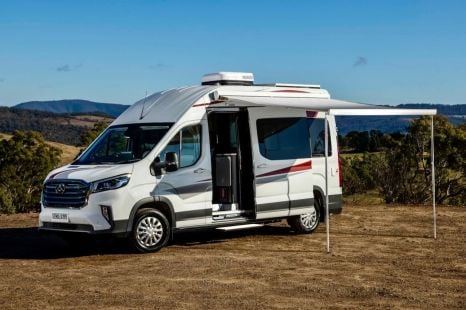

Ben Zachariah
2026 LDV Deliver 9 campervan released with sharp pricing
8 Hours Ago
The Toyota bZ4X is the perfect car for those looking to dip their toes into EV ownership but don't want the transition to be overwhelming.



Contributor

Contributor


Contributor

Contributor
Quickly see how this car stacks up against its competition. Select any benchmark to see more details.
Where expert car reviews meet expert car buying – CarExpert gives you trusted advice, personalised service and real savings on your next new car.
Toyota bZ4X? What does that mean exactly?
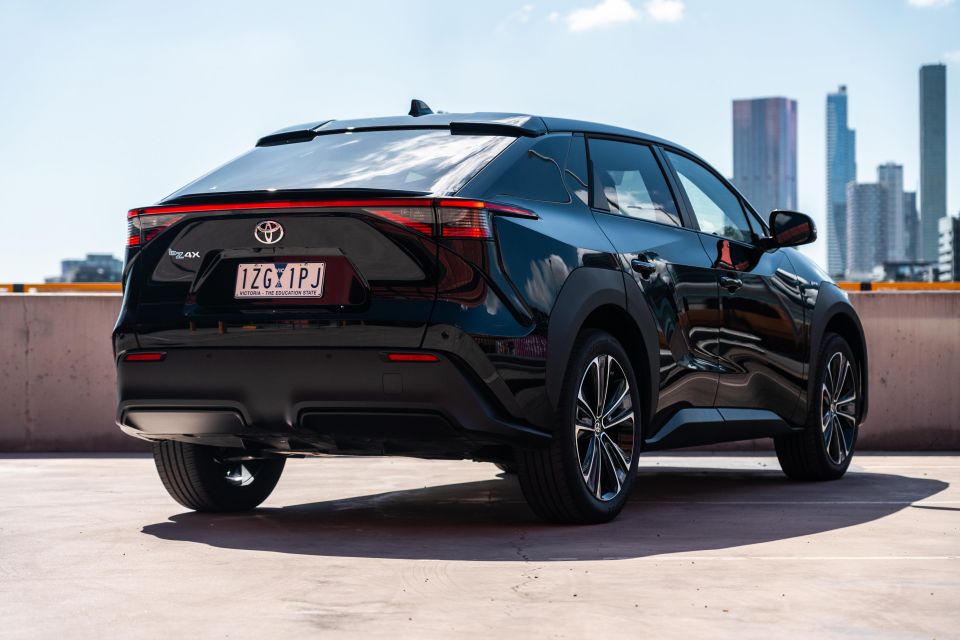
The Toyota bZ4X is an electric mid-size SUV that’s the first vehicle as part of the Japanese carmaker’s ‘beyond Zero’ lineup of electric vehicles (EVs).
It’s based on a dedicated electric platform called ‘e-TNGA’ and was developed in partnership with Subaru which has its own version of the same car called the Solterra.
According to Toyota, the bZ4X name can be broken down into: ‘beyond Zero’, ‘4’ because it’s similarly sized to the RAV4 mid-size SUV, and ‘X’ because it’s a crossover SUV. Hopefully that makes it a touch easier to understand.
This electric SUV is importantly the first all-electric Toyota vehicle to ever be offered in Australia. It was first revealed in 2022 and is only launching locally now following a minor update.
The bZ4X is arriving a little later to the competition in what is already a hotly contented segment. The most notable rival is the top-selling Tesla Model Y and will soon also go up against the Kia Sportage-sized EV5 electric SUV.
Does the Tesla Model Y finally have some proper competition? Read along to find out.
UPDATE, 08/04/2024 – Tesla has decreased the pricing of its Model Y with an update. The range now starts from $63,900 before on-roads. The reference to this price compared to the bZ4X FWD has been amended in this section.
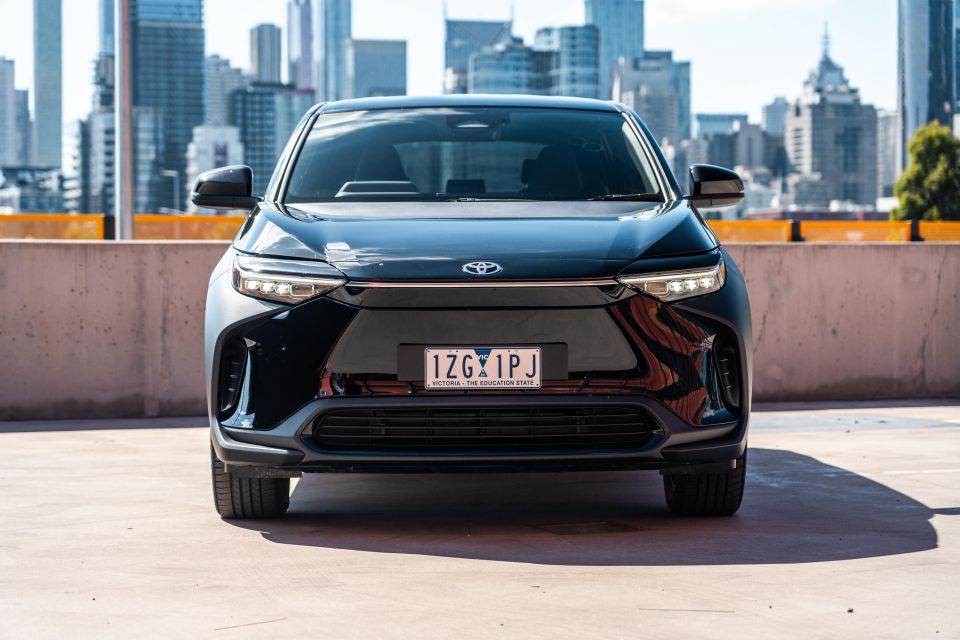
There are currently two bZ4X variants on sale in Australia. On test here is the entry-level single-motor variant which is $2100 more expensive than the entry-level Tesla Model Y RWD.
2024 Toyota bZ4X pricing
Prices exclude on-road costs
To see how the bZ4X compares with its rivals, use our comparison tool.
Buy your new car without the stress. It's fast, simple and completely free.

Great service from Travis and team, second time I have used this business would not hesitate to recommend them to anyone
Craig C.
Purchased a Ford Ranger in Sunshine Coast, QLD
CarExpert helped Craig save $7,224 on his Ford Ranger, now let us save you on your next new car.
Get your BEST priceWalking up to the Toyota bZ4X on the outside it looks like a mash between the new-generation C-HR, which only just launched in Australia, and the current RAV4. Its exterior dimensions more closely match the latter.
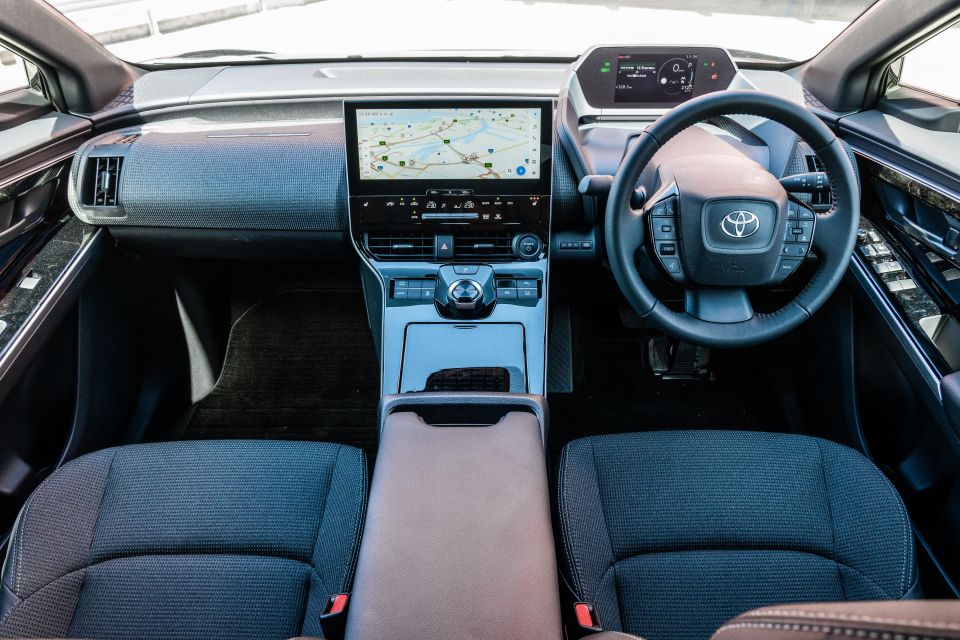
Thanks in part to its lifted ride height that’s inherent with crossovers, the bZ4X is really easy to get in and out of. You can pivot in and out rather than stepping up or down, which is good for those with achy joints.
The battery pack which is mounted under the floor also helps further elevate the driving position. This is something SUV buyers look for and gives you somewhat of a ‘King of the Road’ vibe.
In the entry-level bZ4X FWD you get two-tone fabric and faux leather (Toyota calls it SofTex) upholstery. The former is on the seat base and lower portion of the backrest which is perfect for those who dislike getting stuck to leather and faux leather seats in hot weather.
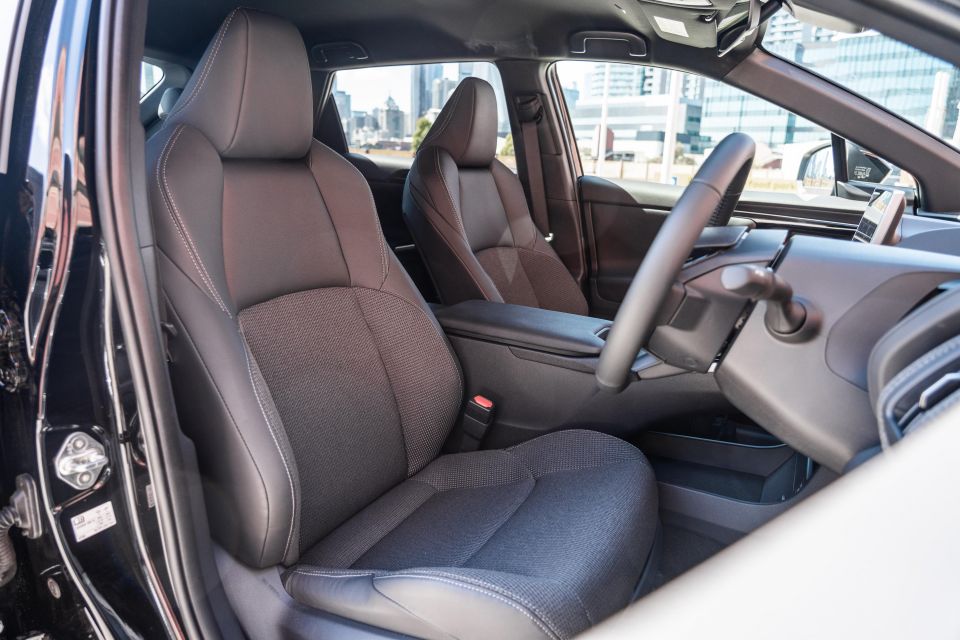
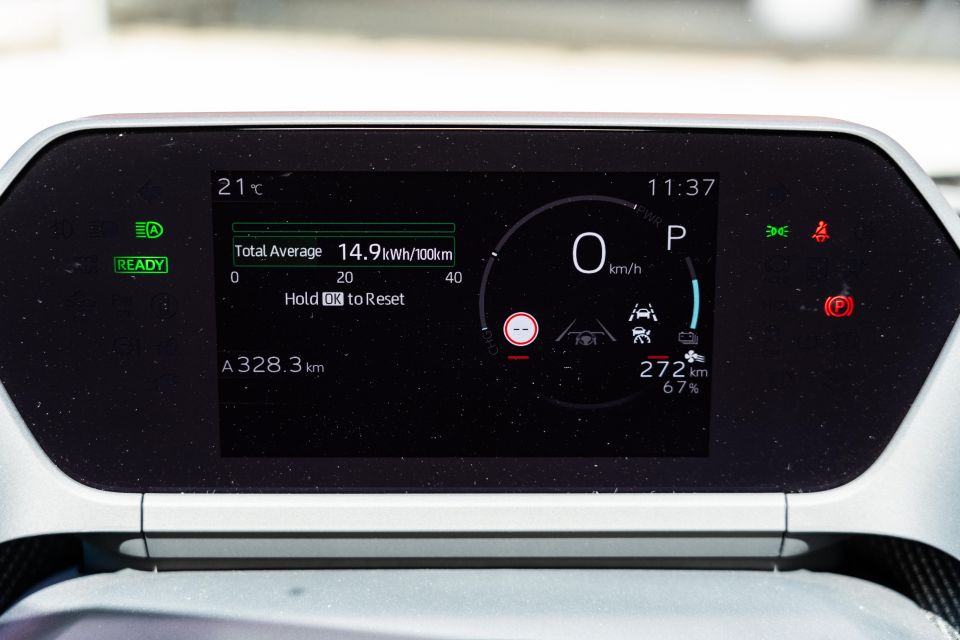
The front seats themselves are sporty-looking units and provide a really comfortable seating position. You feel supported and there’s plenty of side bolstering to secure you in.
The driver’s seat has eight ways of electric adjustment, including plenty of thigh support which is my personal favourite given I have long legs. The front passenger seat, however, is entirely manually adjustable.
Ahead of the driver is a steering wheel and instrument cluster setup that looks and feels very Peugeot-like. You need to virtually have the steering wheel in your lap to then look over it to see the digital instrument cluster.
It’s certainly not for everyone, but if it works for you it allows you to stray your eyes as far off the road to see your current speed etc.

As standard the entire bZ4X range receives a 7.0-inch digital instrument cluster that’s mounted a fair distance from the driver so it looks a little small. Thankfully its interface is ultra minimal and it displays all the critical info you could ever want very clearly.
There are a range of informative pages you can cycle through on the digital instrument cluster, including ones for efficiency, music, compass and settings, among others. You can also just opt to not have informative page on display which makes the current speed info more prominent.
For me the steering wheel and instrument cluster setup only just worked, and I would only just scrape my hands on my legs when performing sharper turns that required more steering lock. I could also see the instrument cluster easier in the morning, as in the afternoon I’d start to slouch.
The steering wheel itself is a round unit, unlike the related Subaru Solterra which has a squared-off unit, that errs on the smaller side. It has plenty of physical push buttons and switches that are easy to understand and provide satisfying feedback.
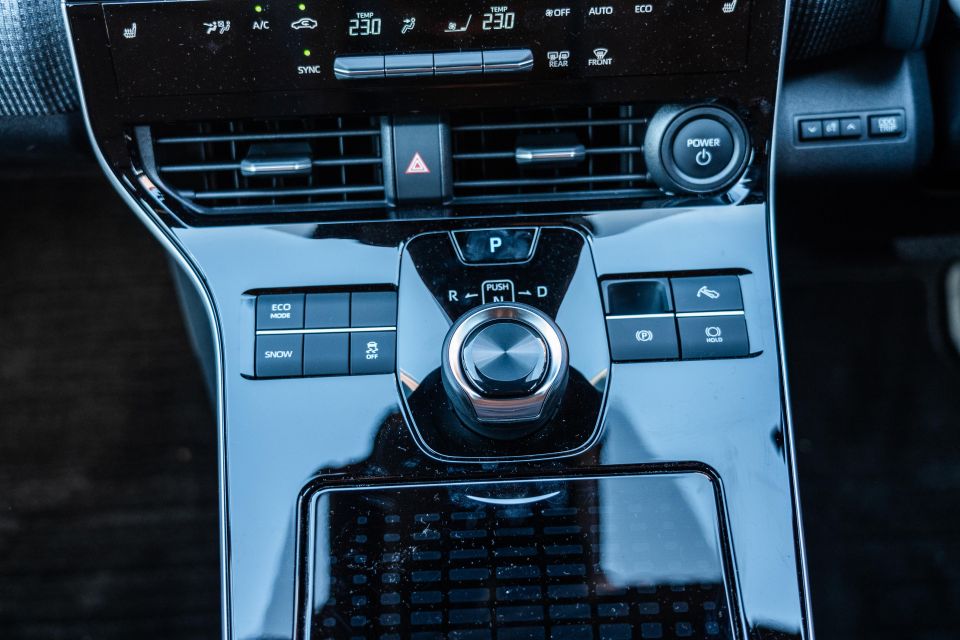
Moving across is the large 12.3-inch touchscreen infotainment system that sits proudly on the dashboard and feels like the centrepiece of the cabin. Unlike previous Toyota models which have left a lot to be desired in the infotainment department, this current-gen unit with the Lexus-like software looks and feels modern and up-to-date.
The screen itself appears to be really high-resolution and is bright enough that it can be viewed clearly in sunny situations. It’s also very responsive to touch inputs which makes opening new pages and scrolling through menus seamless.
The touchscreen infotainment system’s user interface is very easy to navigate, though once you dig under the surface there isn’t a great deal of functionality. You get typical things like radio, calling, and settings.
There’s also satellite navigation as standard which is great for when your phone runs out of service and you still need to find your way home. It’s connected to the internet thanks to the in-built data communication module which means you get live traffic too.

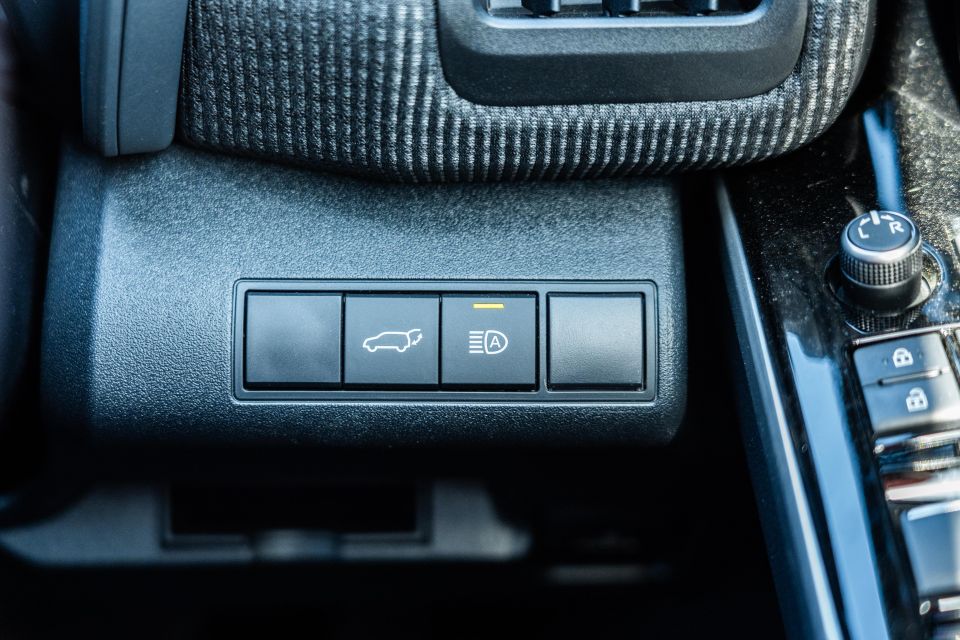
The bZ4X comes as standard with both wired and wireless forms of both Apple CarPlay and Android Auto. With my iPhone 15 Pro Max connected wirelessly I didn’t experience any dropouts whatsoever, which is surprising.
The only catch with the entry-level bZ4X variant on test is it doesn’t come with a wireless charger and in turn with wireless smartphone mirroring connected my phone’s battery drained very quickly. In order to negate this I plugged my phone into a USB port to keep it topped up on longer trips.
I appreciate the climate control pod is really easy to understand and to operate unlike some cars which bury the functions in the touchscreens. There are some physical switches, as well as touch-sensitive buttons which got a little smudgy and fingerprint-ridden after a bit.
Looking around the cabin there are plenty of buttons. This is nice to see as the majority of the critical functions are within quick reach of the driver.
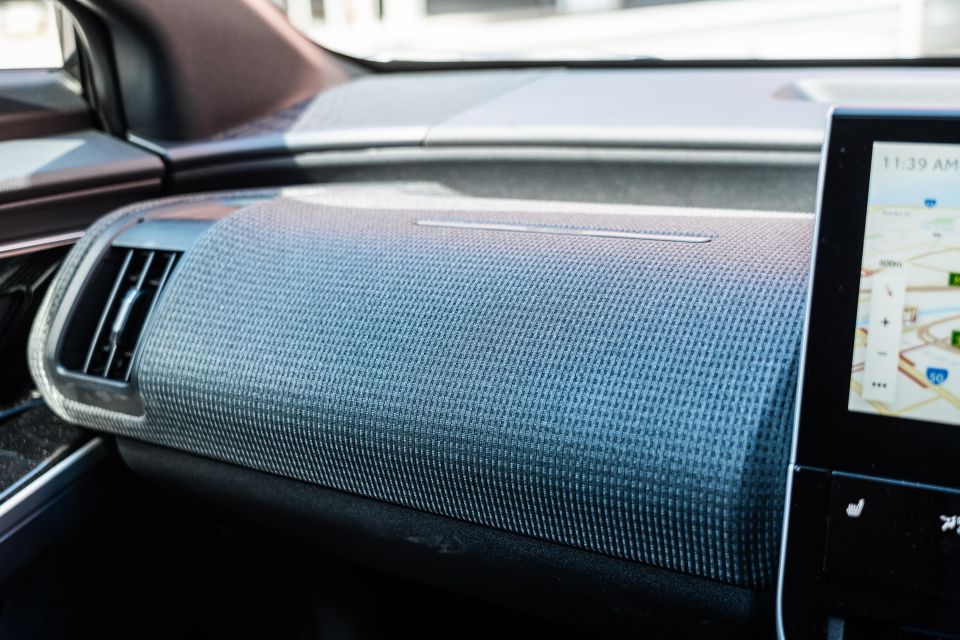
From a switchgear perspective the bZ4X feels like the polar opposite to the Tesla Model Y which is very minimalistic and requires you to use the central touchscreen for many functions. I can understand for some people the Model Y can be a little too minimalist and overwhelming due to how much you need to poke and swipe on the touchscreen.
The bZ4X’s interior is a dark space which isn’t the end of the world as there’s still plenty of light being let in by the side windows and steeply raked windscreen. In the entry-level bZ4X you also don’t get a panoramic sunroof which is ideal for those who live in hotter climates and don’t want the sun glaring down at you.
The dashboard is finished in a woven fabric textile that’s fascinating to look at has a rough texture. It’s similar to what Mini is doing in its current models, including the new Countryman and Cooper.
Disappointingly however there’s a tonne of piano black. It’s plastered on the entire centre console and even features on the door panels which are both high touch-points. This got very dusty and grimy during our loan period, and also gets scratched really easily when you clean it.
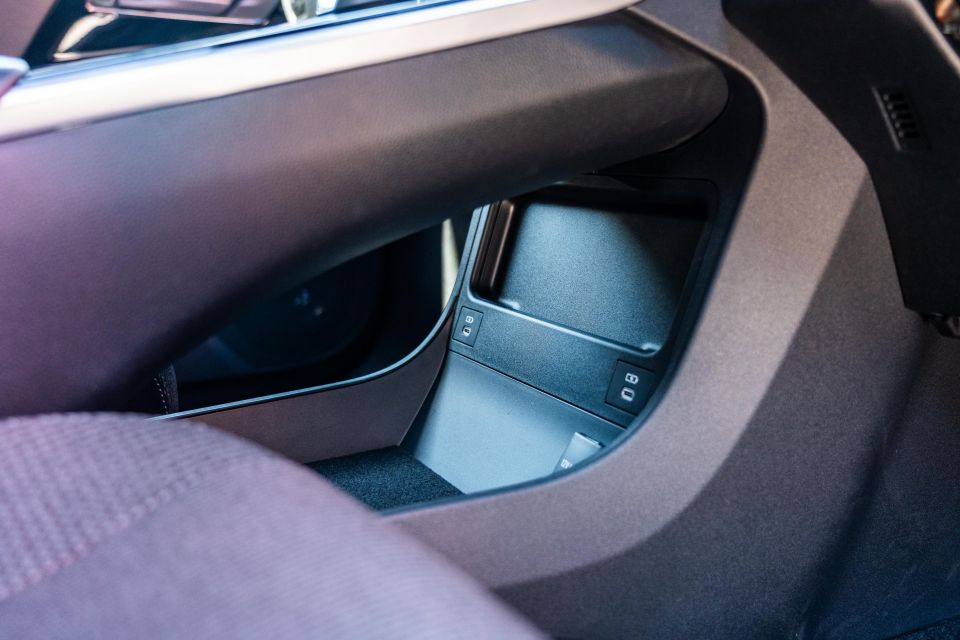
Another oddity about the bZ4X is there’s no typical glove box on the passenger side. In order to make up for this the car has a deeper-than-usual centre console box. There’s an insert in the centre console which can be pulled out to reveal more covered storage.
The bZ4X also has a open space under the piano black-ridden centre console which is large enough to accommodate a handbag or devices that are charging from the two USB-C ports or 12V socket. It’s worth noting the door bins are also large enough to house a big water bottle plus other odds and ends.
The last thing I’ll mention before talking about the second row is the bZ4X’s standard six-speaker sound system punches above its weight.
Moving to the second row I was surprised how much space is on offer in the bZ4X. It’s a very generous space with plenty of leg, head and shoulder room.
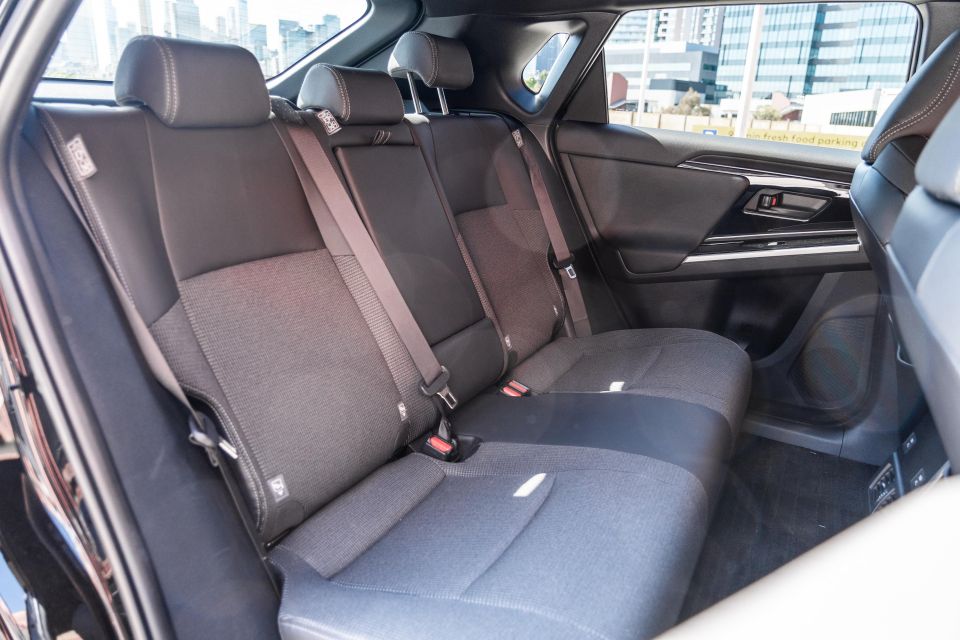
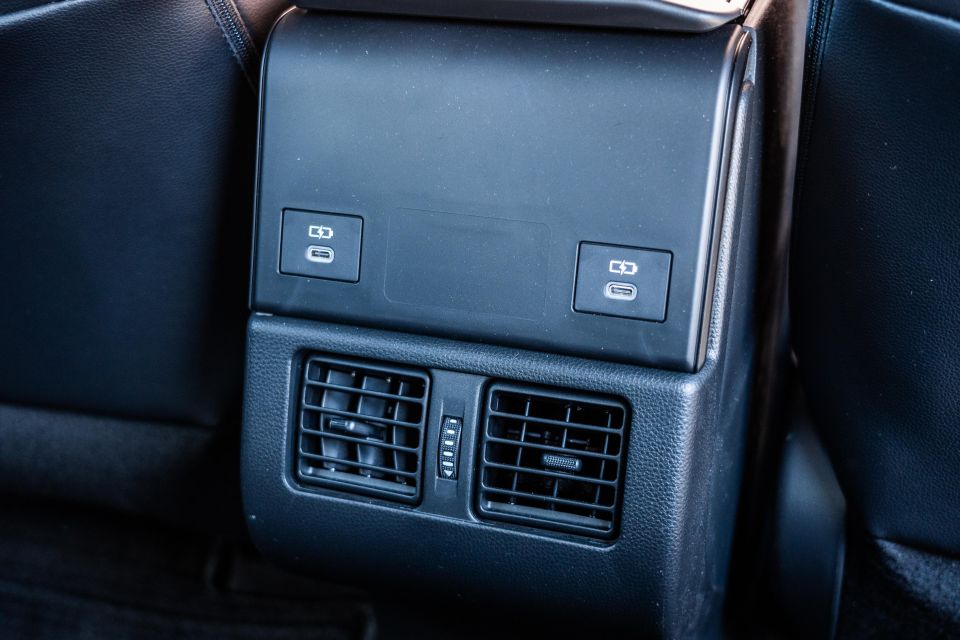
A couple of catches however is toe room is restricted, and like a number of other EVs you feel like you have knees up higher than usual because the battery pack raises the floor height.
Two adults easily fit in the second row of the bZ4X, though trying to squeeze three is doable but only for shorter trips. Thankfully there’s a flat floor which makes fighting for foot space a little easier.
In terms of second-row amenities there are centre console-mounted air vents, USB-C ports, as well as a fold-down armrest with cupholders and a phone holder. There are also the requisite ISOFIX child-seat anchor points on the two outboard seats, plus top-tether points on all three rear seats.
At the back there’s a power tailgate that opens swiftly, and thankfully only beeps once to announce its intention to either open or close. This is a step in the correct direction as operating a power tailgate on a RAV4 or Kluger for example draws a lot of attention due to the number of loud beeps it does.
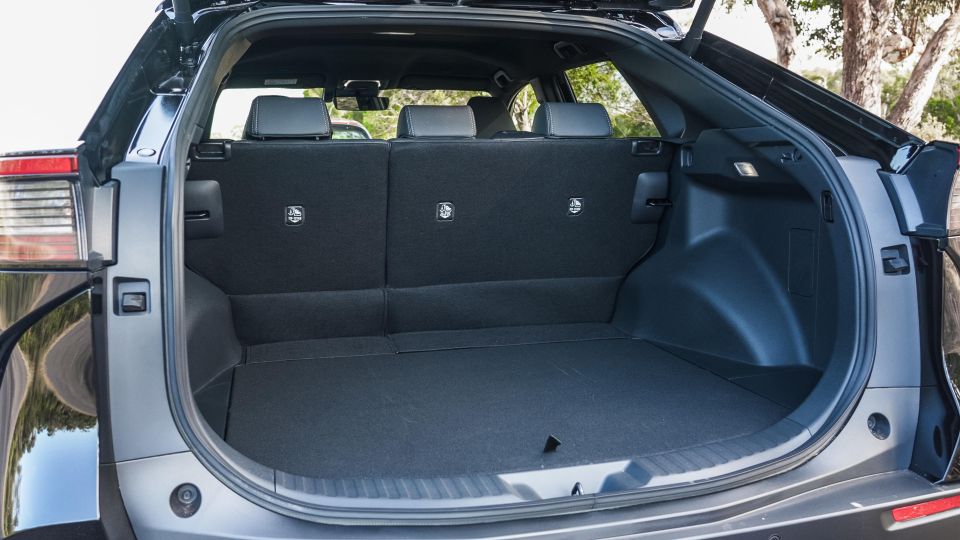
Once the tailgate is open the boot space on offer is fine, but not earth-shattering. Toyota officially claims the bZ4X FWD has a boot capacity of 421 litres.
Given this car is based on a dedicated electric architecture I’m disappointed there’s barely any underfloor storage in the bZ4X. It’s only really big enough for some charging cables. There’s also no frunk whatsoever.
The bZ4X only comes with a tyre repair kit which isn’t surprising for an EV. It’s something to keep in mind however if you plan to venture far from tyre repair shops as you could be stuck waiting a while for roadside assistance.
The Toyota bZ4X is available with two drivetrains – on test is the entry-level single-motor variant.
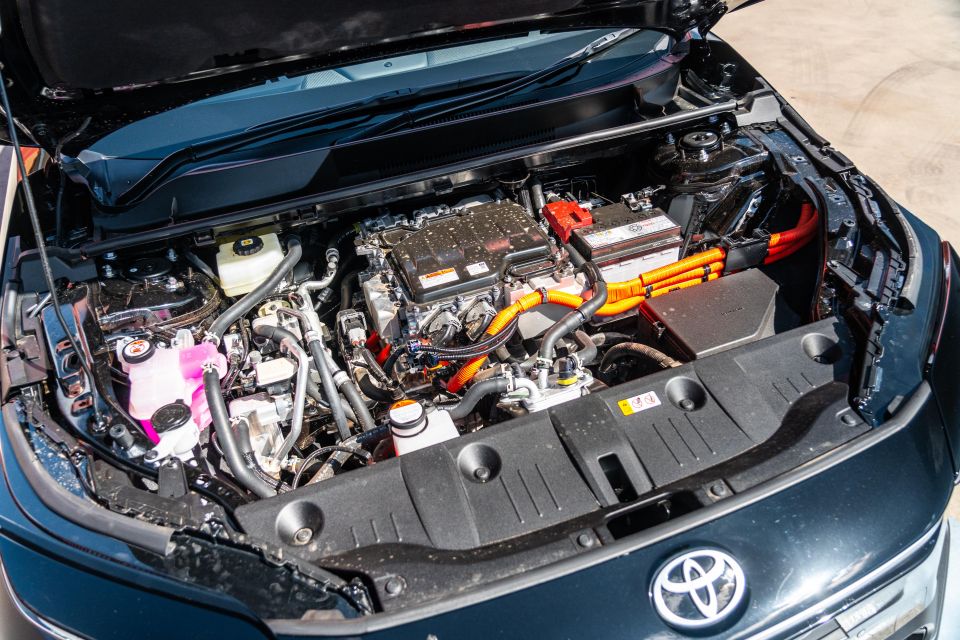
| Model | Toyota bZ4X FWD |
|---|---|
| Electric motor | Single front-axle mounted |
| Power | 150kW |
| Engine torque | 266Nm |
| Driven wheels | Front-wheel drive |
| Battery | 71.4kWh lithium-ion battery pack |
| Range | 436km (WLTP) |
| Maximum AC charging rate | 11kW |
| Maximum DC charging rate | 150kW |
| Weight | 1960kg (kerb) |
| Energy consumption (claim) | 16.8kWh/100km (WLTP) |
| Energy consumption (observed) | 16.6kWh (1250km mixed driving) |
It’s worth noting I achieved this claim-beating average energy consumption figure over a long road trip that included predominantly highways, which is where EVs are typically at their least efficient.
Throughout my time with the tester the best average energy consumption figure I saw on an average trip into the office was 11.7kWh/100km, which is Tesla-rivalling.
I did a few fast charges during my loan period and noticed the bZ4X will only charge at its 150kW max DC charging rate for a brief period. Once the battery reaches around 60-70 per cent the charging rate dips down very quickly.
To see how the bZ4X compares with its rivals, use our comparison tool.
Starting up the bZ4X is a very familiar process if you’ve ever driven a Toyota hybrid car before. You simply press the start button on the dashboard and a beep plays to let you know the car is ready to be driven.
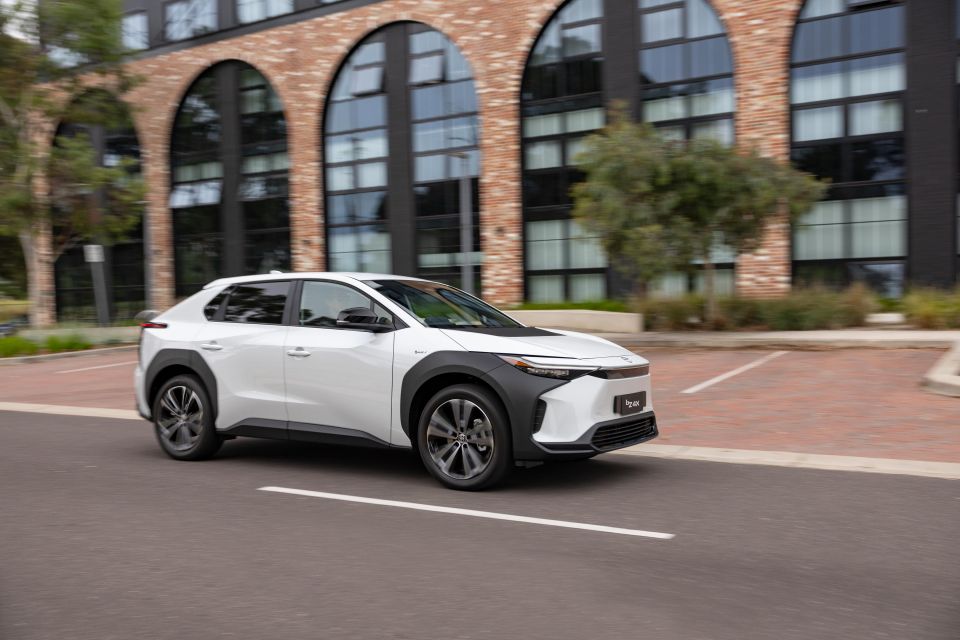
Where expert car reviews meet expert car buying – CarExpert gives you trusted advice, personalised service and real savings on your next new car.
Setting off you’ll have to acquaint yourself with the Prius-style puck gear selector which takes just a bit to get used to. In order to select either drive or reverse you need to push the puck down and then twist either left or right, depending on which direction you intend to head.
The single-motor Toyota bZ4X has linear and adequate acceleration that definitely won’t blow your socks off. Thankfully like all EVs the full amount of torque is available from standstill which means you’ll get the jump on most traffic at the lights.
Driving the bZ4X feels similar to a regular internal combustion engine (ICE) car. There’s no one-pedal driving mode which in my personal preference is the most natural way to drive an EV. What this means is you need to depress the brake pedal to actually come to a stop in the bZ4X.

Instead this has a standard driving mode it defaults to every time you start up the car which allows it to coast like an ICE car when you take your foot off the accelerator without any regenerative braking.
There’s also a ‘Regen Boost’ function that’s activated by pressing a button on the centre console and it does what the name suggests – it boosts regenerative braking. The throttle in this mode becomes more numb to accommodate the regenerative braking that’s factored into the accelerator pedal travel.
When you have the ‘Regen Boost’ mode turned on, which I did for the majority of my testing, the car will slow down itself at a fairly linear rate to around 5-10km/h without depressing the brake pedal whatsoever, though as I noted before you still need to press it to come to a complete stop.
I don’t believe it’s the end of the world that the bZ4X doesn’t have a one-pedal driving system as this car is intended for those transitioning out of a regular ICE or hybrid car.

Something I like about the bZ4X is the digital instrument cluster shows when the brake lights are illuminated. I recently tested the GWM Ora which in its one-pedal driving mode didn’t illuminate the brake lights once you came to a complete stop.
It’s good and reassuring to know when your tail lights are illuminated in the bZ4X so the vehicles behind you are aware you’re slowing down.
Around town the bZ4X is quiet and serene. This isn’t uncommon for EVs as there’s no engine chugging away under the bonnet. The only noticeable sound is the odd bit of tyre noise when you’re turning corners.
At low speeds the car’s suspension tune is very comfortable and settled which is to be expected given it’s a Toyota. The electric SUV takes speed bumps like a champ and doesn’t ever feel awkward over harsher bumps.
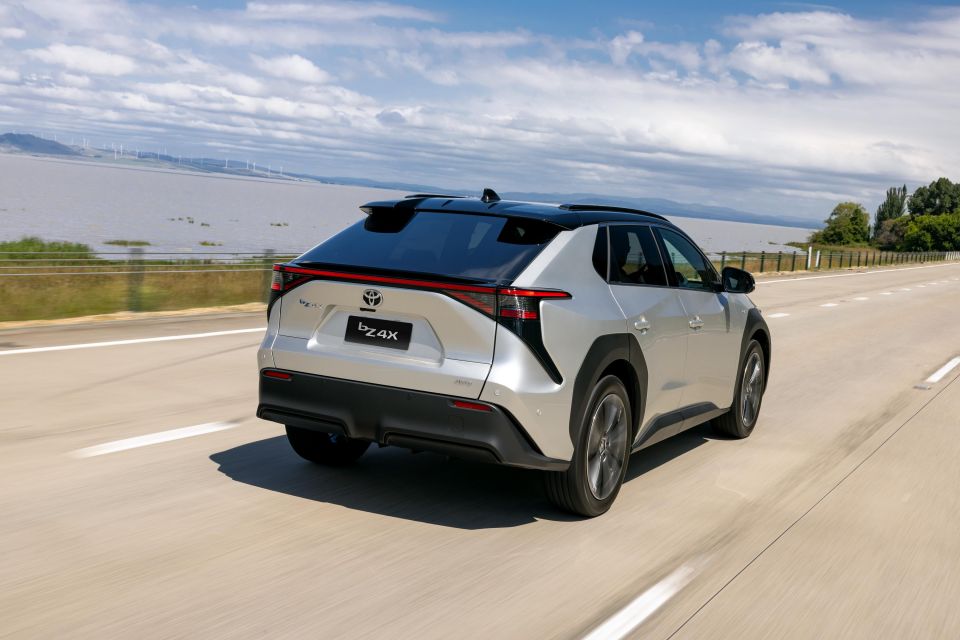
The bZ4X’s steering is really nicely weighted which makes it rewarding to twirl the wheel. Disappointingly the turning circle isn’t as tight as I thought as the car’s wheelbase is rather large (2850mm).
As standard the bZ4X FWD comes with front and rear parking sensors, though unfortunately it only has a reversing camera. Although the reversing camera does have good quality it’s not as handy as having a proper surround-view camera – you need to step up to the flagship AWD variant to get this feature.
Building up speed in the single-motor front-wheel drive is easy and effortless. It doesn’t feel like it’s ever really out of puff, even at highway speeds, and still has enough oomph in reserve to overtake if necessary.
There’s a bit more obvious tyre noise at higher speeds, especially on coarse-chip roads that are prolific in rural Australia, though for the most part it’s still quiet inside the cabin.
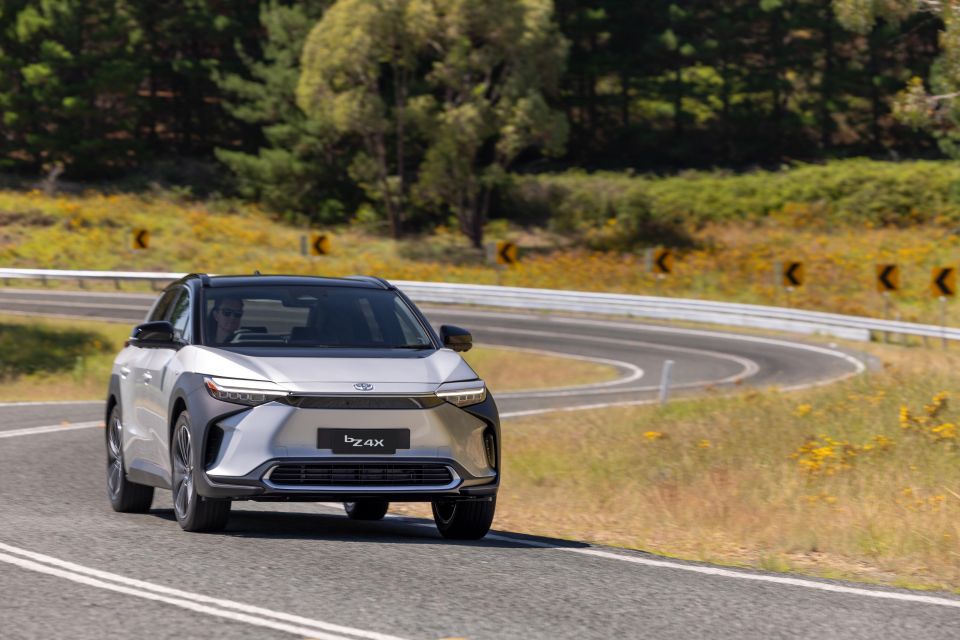
Just like at low speeds, the suspension tune is very comfortable at higher speeds, though some harsher bumps can be transmitted into the cabin. Continuous undulating bumps, however, are ironed out smoothly, which is satisfying.
On the safety front is where this particular version of the bZ4X is let down. The entry-level FWD model on test here goes without blind-spot monitoring and rear-cross traffic alert. You need to step up to the flagship AWD model to get both these features.
It’s really disappointing you don’t get either of these safety features because they’re standard on cars that are considerably more affordable.
Adaptive cruise control is standard across the range however and it reacts to other cars merging into your lane very naturally. If the cars are travelling faster than you the bZ4X thankfully doesn’t slam on the brakes like some.

The lane-keep assist and lane centring function which can be activated by pressing a button on the steering wheel is up there with some of the best I’ve tested so far. This is surprising given I’ve had some shocking experiences with Toyota vehicles in the past.
When this function is activated the car will keep itself within a lane even really well. It has road edge detection which means it works even without proper line markings. This is incredibly handy for those who live in rural and regional areas.
It’s not all perfect however as like most lane centring systems it does get lost on the odd occasion. Thankfully all you need to do to fix this is slightly nudge the steering wheel back in the correct direction.
As standard the bZ4X comes with bright LED headlights which are now a Toyota staple. They have an adaptive high-beam function which automatically dips a portion of the light when it detects a car’s headlights or tail lights.
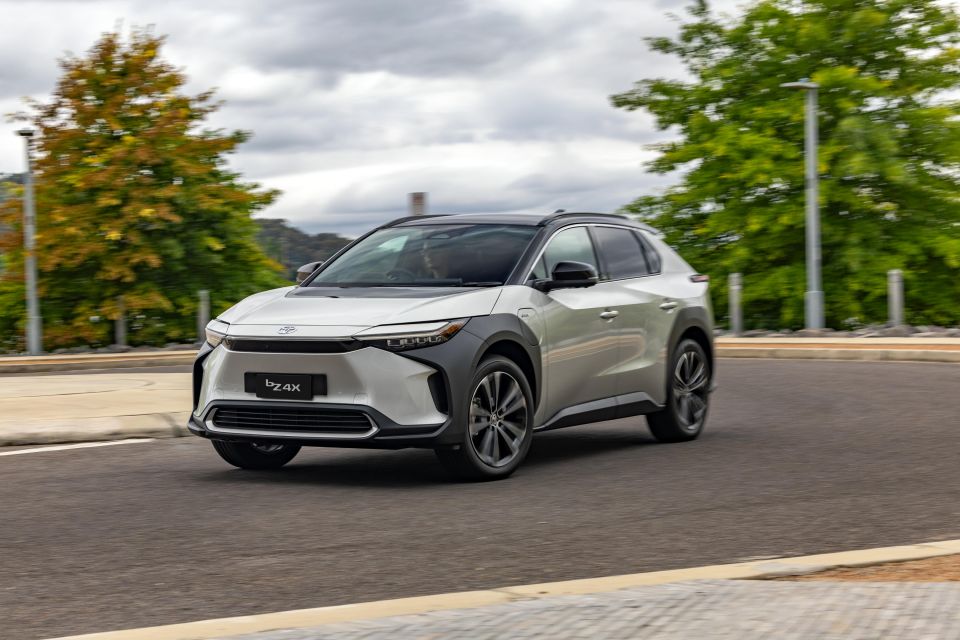
The adaptive high-beam function is perfect for those who live in dimly-lit country areas who don’t want to faff around with dipping your lights every time you meet a car.
I found in practice however the adaptive high-beam function would sometimes be overly eager to dip portions of the high-beams and others it wouldn’t dip quickly enough, resulting in getting flashed from oncoming cars.
The 2024 Toyota bZ4X is available in two different trim levels at launch. On test is the entry-level FWD variant.
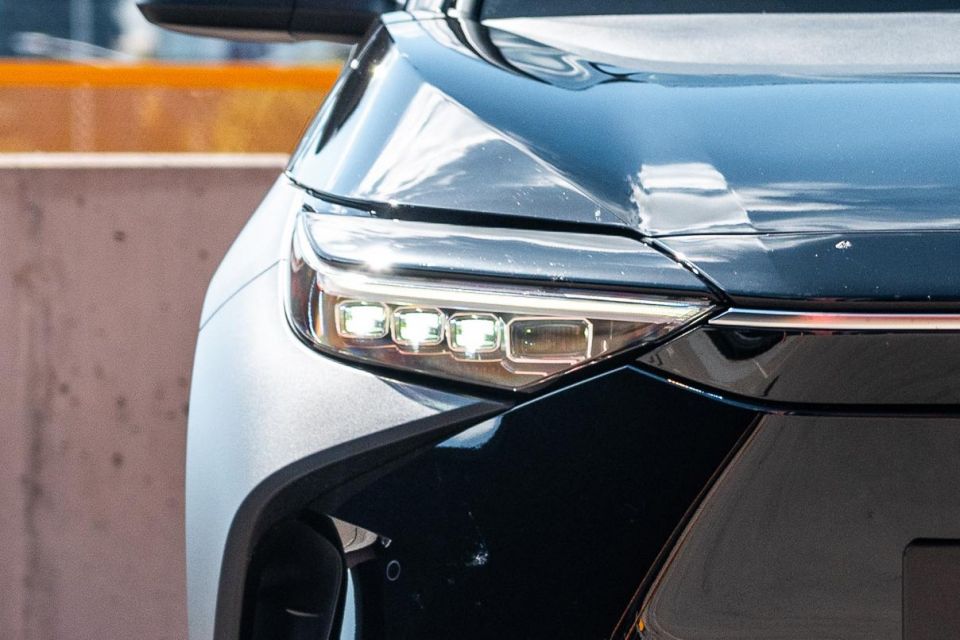

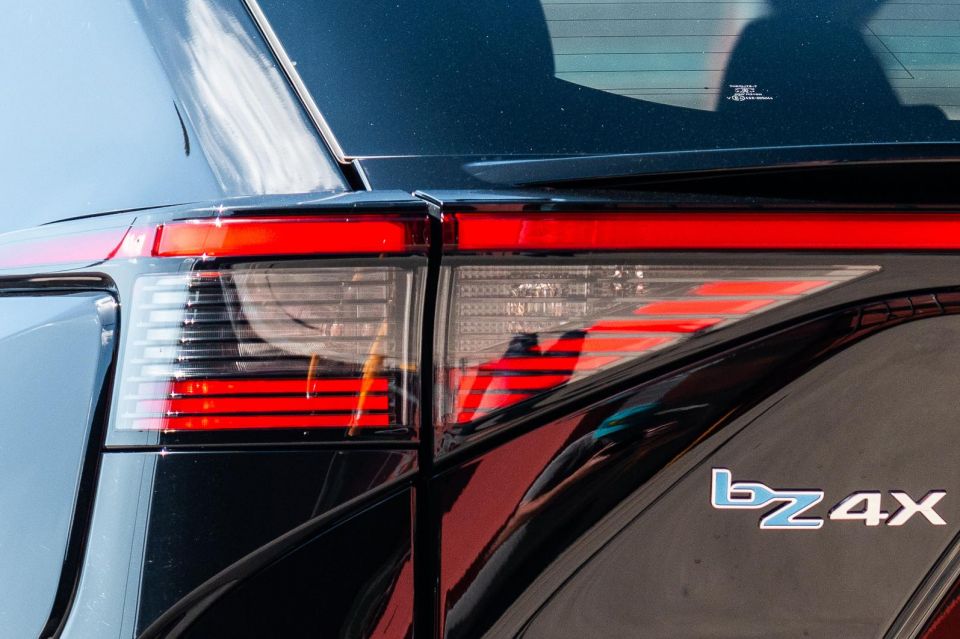

bZ4X FWD highlights:


bZ4X AWD adds:
The bZ4X has a five-star ANCAP safety rating based on testing carried out by Euro NCAP in 2022.
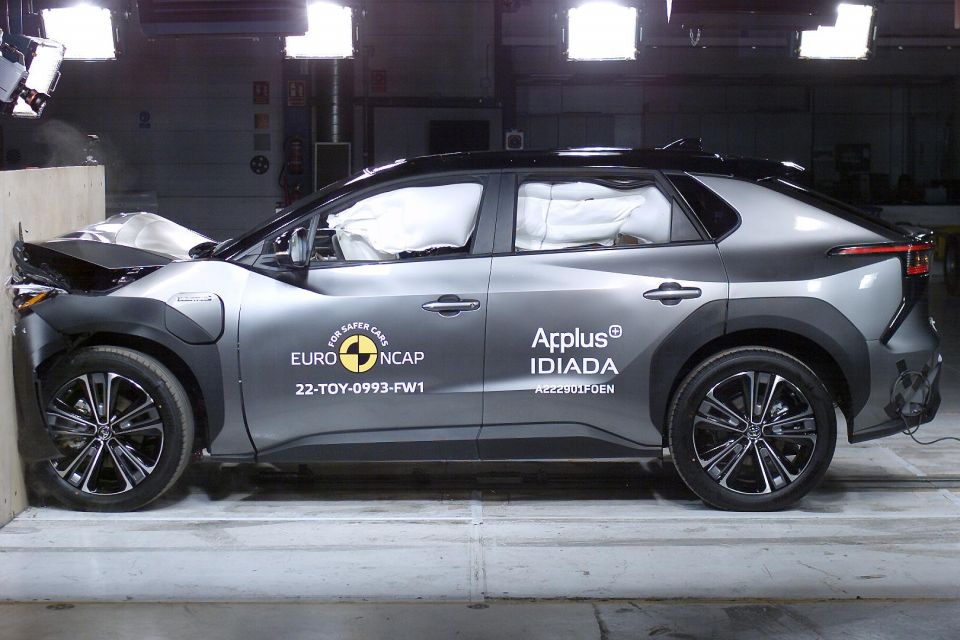
It scored 88 per cent for adult occupant protection, 87 per cent for child occupant protection, 79 per cent for vulnerable road user protection, and 91 per cent for safety assist.
Standard safety equipment includes:
bZ4X AWD adds:
The bZ4X is backed by a five-year, unlimited-kilometre warranty.

That extends to seven years on the driveline, provided the car is serviced annually in the Toyota network.
The battery is warrantied for five years, plus an additional five provided the vehicle is subjected to an annual battery health check. Toyota guarantees the battery for eight years to 70 per cent of its initial capacity.
Maintenance is required every 12 months or 15,000 kilometres, and the first five services will each cost you $180.
Buy your new car without the stress. It's fast, simple and completely free.

Great service from Travis and team, second time I have used this business would not hesitate to recommend them to anyone
Craig C.
Purchased a Ford Ranger in Sunshine Coast, QLD
CarExpert helped Craig save $7,224 on his Ford Ranger, now let us save you on your next new car.
Get your BEST priceThe Toyota bZ4X makes perfect sense for those who currently drive a Toyota or other legacy-branded ICE-powered car and are wanting to adopt electric power but don’t want their EV to reinvent the wheel.
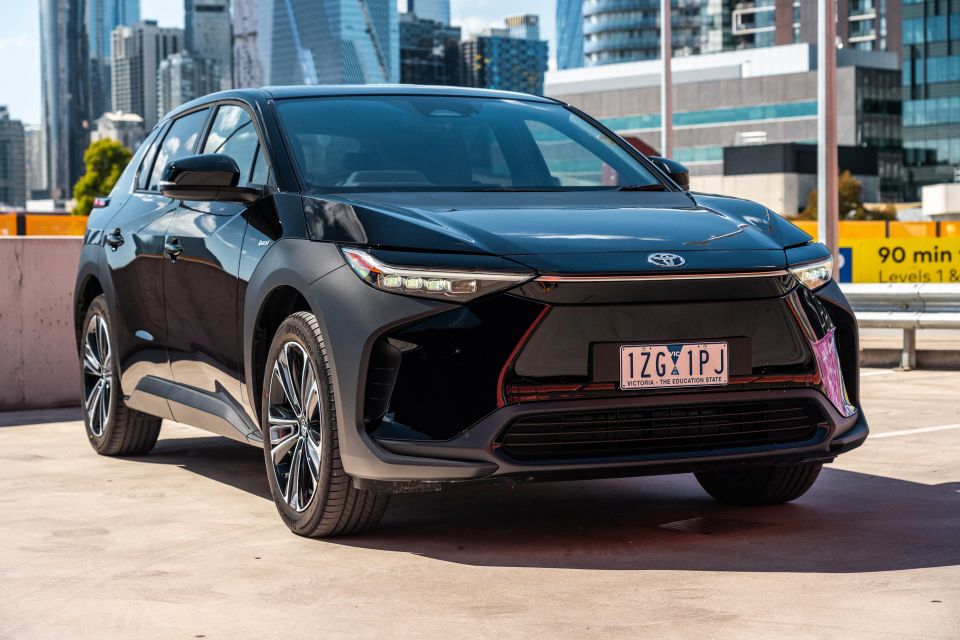
Sure this electric SUV has a name that doesn’t necessarily roll off the tongue, but the way you interact with it and how it drives feels very familiar and Toyota-like.
The interior presentation, steering wheel and digital instrument cluster placement aside, is also traditional enough as there’s a plethora of physical buttons to make changing functions a lot more intuitive than using a touchscreen.
With the entry-level bZ4X FWD on test here I can understand why forgoing certain features makes the base price more attractive, but safety isn’t anything that should be compromised on. Blind-spot monitoring and rear cross-traffic alert should really be standard across the range.
My ideal spec if I was getting a bZ4X would be to have the single-motor powertrain as I found it to be surprisingly efficient both in town and out on the open road. I’d also want it to have the smaller 18-inch wheels available on the related entry-level Subaru Solterra so the ride is even smoother.
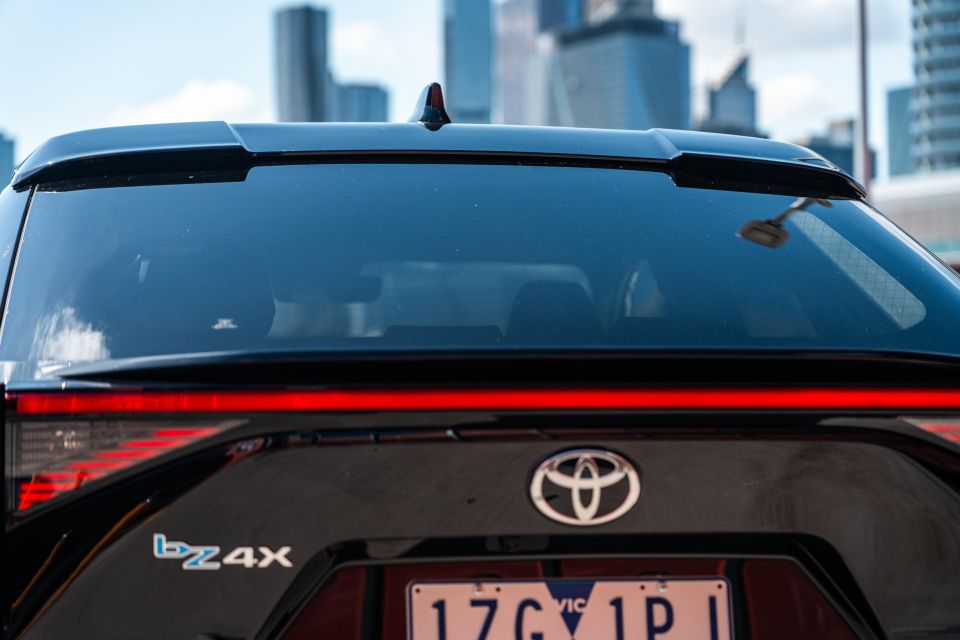
Click the images for the full gallery
MORE: Buy a Toyota bZ4X MORE: Everything Toyota bZ4X
Where expert car reviews meet expert car buying – CarExpert gives you trusted advice, personalised service and real savings on your next new car.
Jack Quick is an automotive journalist based in Melbourne. Jack studied journalism and photography at Deakin University in Burwood, and previously represented the university in dance nationally. In his spare time, he loves to pump Charli XCX and play a bit of Grand Theft Auto. He’s also the proud owner of a blue, manual 2020 Suzuki Jimny.


Ben Zachariah
8 Hours Ago
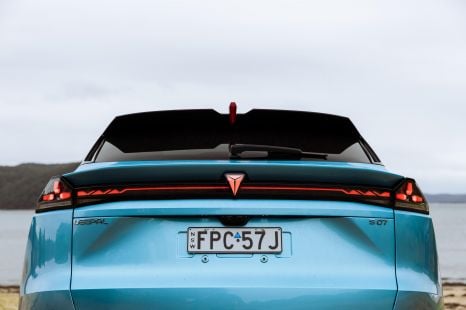

William Stopford
9 Hours Ago
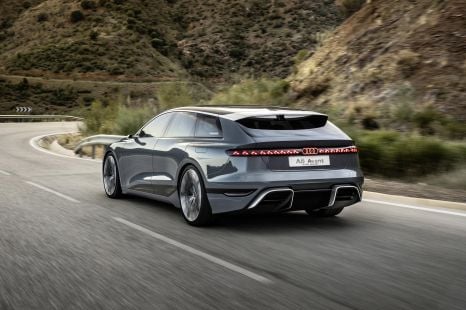

Derek Fung
10 Hours Ago


Alborz Fallah
10 Hours Ago
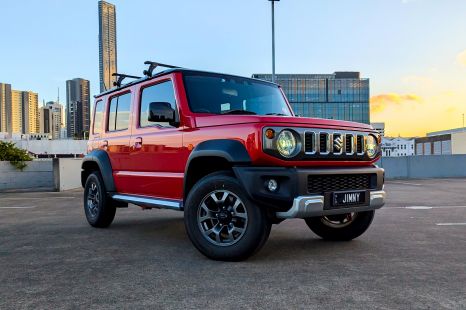

William Stopford
17 Hours Ago
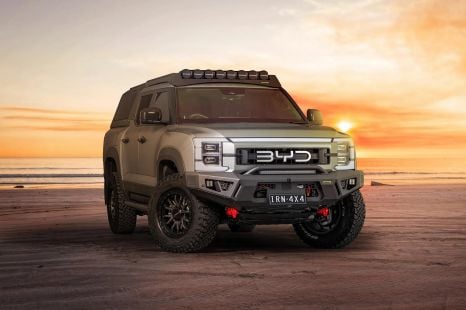

William Stopford
1 Day Ago